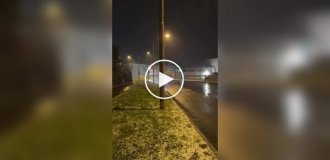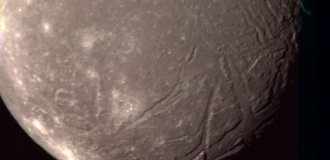A strange barcode or an incubator for alien eggs: where are thousands of strange holes in Peru (6 photos)
There are more than five thousand strange depressions, but scientists cannot explain who created them. 
This is not the only find of scientists in Peru, which defies explanation. Thousands remain the same mysterious phenomenon. pits that cover part of the Pisco Valley. As soon as they are not called Peruvians: and Monte Sierpe, which means "serpentine mountain", and Cerro Viruela, which literally translates as "smallpox hill", and just a strip holes, and on the Web these holes were even dubbed an incubator for Alien eggs. Getting to them is quite difficult, so there are not many researchers visited the "serpent mountain". 
Strange formations were first discovered in the thirties of the last century: then the pits were photographed from a plane for the media. Through twenty years the first group of researchers arrived here. At the same time made the first detailed description: a strange strip with holes stretched one and a half kilometers. The width of this band in different places varies from 14 to 20 meters. Well, the number of holes generally surprised scientists - there are more than 5 of them. thousand. Then the archaeologists compared these holes with empty graves and most added even more questions to the find. 
Satellite view.
The following studies were carried out in the 1980s. Pits measured: they were 50 to 100 cm deep and less than a meter in diameter. Also holes studied in detail, it turned out that they are different: some are directly dug into ground, others are made of stones on the surface.
The latest study was conducted by scientists from the California university in 2015. They took drone shots to create smallpox hill map. They also explored the area around the pits: it turned out that that there are no traces and artifacts of the past. There is no path nearby Incas and pottery remains, so that research has generated even more questions. At the same time, scientists dated the holes: the pits were created around the 15th century. At that time, the people joined the Inca empire Chincha culture, who also lived in the Pisco Valley. 
So what versions do scientists have about thousands of holes in peruvian valley? Of course, they reject quasi-scientific theories. According to one of the versions, these pits are nothing more than fertilizer storage, used by the inhabitants of the Pisco Valley in the past. There is one more theory: with the help of pits, people measured tribute. 
The adobe city of Tambo Colorado.
The fact is that Monte Sierpe is less than ten kilometers from Tambo Colorado, an ancient Inca settlement. A strip of holes lies just on the way to this city. People who needed to pay tribute to the rulers, and built these pits so that they could measure amount of tax. Pisco Valley just turned out to be very convenient for this, as it was located near Tambo Colorado. Next, probably tribute could be taken into account by local accountants with the help of their counting quipu rope system. True, this theory is also very shaky, the scientist community to it a lot of questions. For example, nothing like there was no territory where the Incas lived. For what reason only in the valley Pisco was used to measure tribute with the help of pits, and why is it so in other regions? did the practice fail? 
In general, so far only one thing is known for sure: we still do not know why thousands of holes were dug in Peru.





















